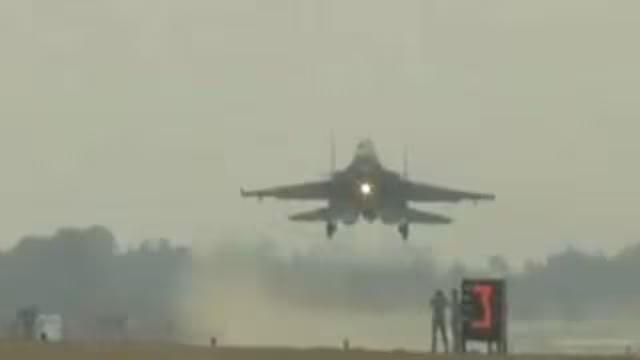
Why is IAF conducting fighter jets’ landing & take-off drill at Ganga Expressway in UP?
In a unique exercise, the Indian Air Force (IAF) recently conducted take-off and landing drills on the Ganga Expressway in Uttar Pradesh, showcasing the expressway’s potential as an alternative runway during times of war or national emergencies. The exercise, which included fighter jets like Rafale, was carried out both during the day and at night, making it the first airstrip on any expressway in India equipped to handle both day and night landings of jets.
The IAF’s decision to conduct this exercise on the Ganga Expressway has raised several questions among aviation enthusiasts and security experts alike. What makes this expressway so special? How can it be used as an alternative runway? And what are the benefits of having a runway on an expressway? In this blog post, we will delve deeper into the reasons behind the IAF’s decision and explore the implications of this exercise.
Why the Ganga Expressway?
The Ganga Expressway, also known as the Purvanchal Expressway, is a 340 km long six-lane highway that connects Lucknow to Ballia in Uttar Pradesh. While it was primarily built to reduce travel time between the two cities, its strategic location and infrastructure make it an ideal location for an alternate runway.
The expressway’s proximity to the Indo-Nepal border and its location in the eastern part of Uttar Pradesh make it an important geographical location for the IAF. The IAF has been looking for alternative runways in the region to enhance its operational capabilities and reduce dependence on traditional airbases.
Benefits of having an airstrip on an expressway
Having an airstrip on an expressway offers several benefits, including:
- Flexibility: An airstrip on an expressway can be used as an alternative runway in case of an emergency or during times of war, reducing the risk of air traffic congestion at traditional airbases.
- Speed: Fighter jets can take off and land quickly on the expressway, allowing for rapid deployment of forces in response to emerging threats.
- Stealth: The expressway’s location and infrastructure make it an ideal location for stealth operations, allowing fighter jets to take off and land without being detected by enemy radar.
- Reduced dependence on traditional airbases: Having an airstrip on an expressway reduces the IAF’s dependence on traditional airbases, making it more difficult for an adversary to disrupt air operations.
The exercise
The IAF’s exercise on the Ganga Expressway was a comprehensive test of the expressway’s capabilities, involving multiple fighter jets, including the Rafale, Su-30MKI, and Mirage 2000. The exercise was conducted during the day and at night, with fighter jets taking off and landing on the expressway’s designated airstrip.
The exercise was designed to test the expressway’s infrastructure, including its runway, taxiways, and parking bays. It also involved testing the expressway’s communication and navigation systems, as well as its emergency response procedures.
Conclusion
The IAF’s exercise on the Ganga Expressway is a significant development in the country’s aviation sector. It highlights the IAF’s commitment to enhancing its operational capabilities and reducing its dependence on traditional airbases. The exercise also demonstrates the potential of the Ganga Expressway as an alternative runway during times of war or national emergencies.
As the world becomes increasingly interconnected, the importance of having robust air defense capabilities cannot be overstated. The IAF’s exercise on the Ganga Expressway is a step in the right direction, and we can expect to see more such exercises in the future.
News Source:






